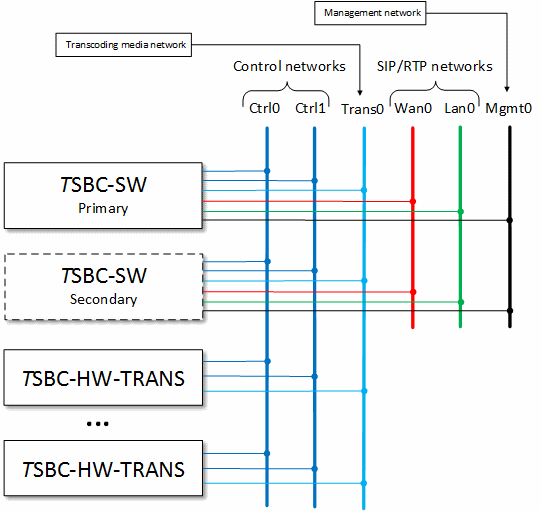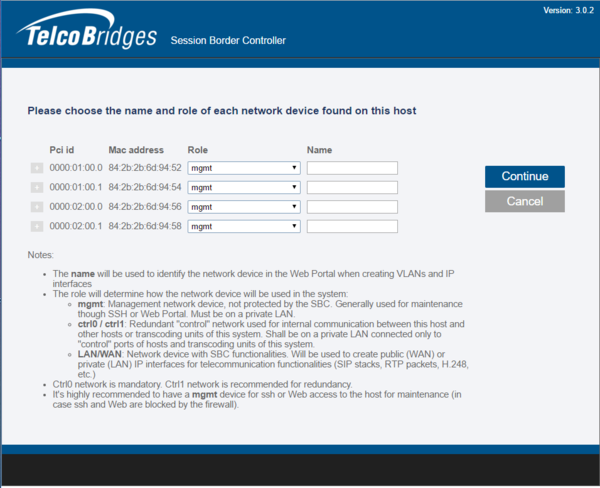FreeSBC:1+1 Configuration
William Wong (Talk | contribs) (→Requirements) |
William Wong (Talk | contribs) (→Network setups) |
||
| Line 11: | Line 11: | ||
== Network setups == | == Network setups == | ||
| − | + | FreeSBC in redundancy and protected (1+1) system configuration requires additional network requirements as depict in below network configuration. | |
| − | === | + | ==== 1+1 ==== |
| − | + | Combining the redundant network requirements to the redundancy need, the deployment of such a system requires multiple networks as depicted below: | |
| − | + | ||
| − | + | ||
| − | + | ||
| − | + | ||
| − | + | ||
| − | + | ||
| − | + | ||
| − | + | ||
| − | + | ||
| − | + | ||
| − | + | ||
| − | Combining the redundant network requirements to the | + | |
[[File:Tsbc-sw-1p1-withtrans.png]] | [[File:Tsbc-sw-1p1-withtrans.png]] | ||
Revision as of 22:08, 25 September 2018
Contents |
Requirements
FreeSBC 1+1 requires a second hardware unit/instance to provide high availability and redundancy support in active/standby configuration mode. For virtual machines setup, this can be a second instance on the system, while baremetal setup requires a separate hardware, that acting as the secondary unit ideally with the same resource as the primary unit to provide same performance during active/standby failover. See FreeSBC for different installation guides for the same requirement of secondary FreeSBC setup.
FreeSBC 1+1 requires a minimum of three networks for initial configuration. The first network will be used as a local management interface to access the instance using the web portal (HTTP/HTTPS) and SSH access. The second network will transport the actual incoming and outgoing VoIP streams (signaling and media) that the FreeSBC will process. The third network will be used as a control interface connecting to another host in FreeSBC 1+1 configuration for control purpose.
Network setups
FreeSBC in redundancy and protected (1+1) system configuration requires additional network requirements as depict in below network configuration.
1+1
Combining the redundant network requirements to the redundancy need, the deployment of such a system requires multiple networks as depicted below:
Network device discovery
Once all networks have been physically (or virtually) connected to the FreeSBC instance, the system can be started. Upon first bootup with indication for requirment to connect transcoding unit to the FreeSBC system (or after an operator initiated 'network device role' reset), the FreeSBC web portal will show a network device assignation page. This page is used to identify the role of each detected devices. As described above, the role can be any of the following three: control, management or VoIP traffic (named LAN/WAN). Once the role is selected, the operator can enter a name for each. Every configured/detected physical network device will then appear as a 'physical port' in the 'IP Interace' tab in the web portal.
The operator can click on the '+' sign to get more information about a specific network device. These information are helpful to match detected networks with the real network based on these characteristics (IP, driver type, etc).
Configuring Transcoding Unit(s)
For configuring Transcoding unit on FreeSBC, please see Toolpack:Tsbc IP Network Settings 3.0


